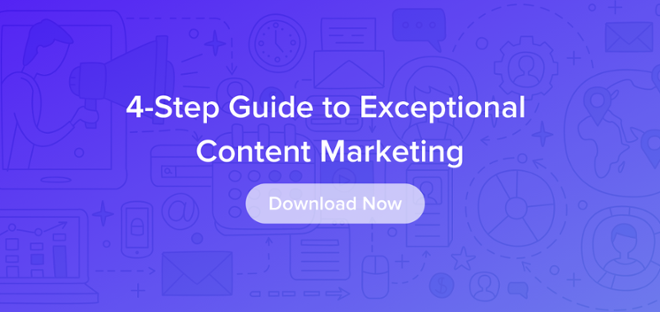 In 2013, a typical social media user consumed 285 pieces of content every day, and that total has only grown as a result of social expansion and content's continued migration from our coffee tables and desktops to mobile platforms.
In 2013, a typical social media user consumed 285 pieces of content every day, and that total has only grown as a result of social expansion and content's continued migration from our coffee tables and desktops to mobile platforms.
Readers now move and click with the attention span of goldfish — shorter, actually. From 2000 to 2015, the time we devoted to a single stimulus shrank from 12 seconds to eight, and by 2045, it can be expected that we won't have an attention span at all and will be roaming the earth like birds exposed to strobe lights.
So in this saturated, fast-twitch content world, how do we seize what remains of our readers' consciousness and direct it to our sales funnels?
Marketers tend to believe in buzzwords. They'll tell you that "exceptional," "viral," or "quality" content wins the day. But there's plenty of well-written content available to readers. To differentiate your brand's content, you have to embrace format.
"Finishable" content is the future.
What Is Finishable Content?
A mobile readership demands content that can be consumed on the move, in tight spots, and over short periods of time. If it can't be read on the toilet, it may not be read at all.
Yes, this may be a strike against long-form content. But those works best serve the deeper reaches of your sales funnel. At the top, any idea that can't be explained in three sentences shouldn't be.
Finishable content is comforting to readers. They know there's a beginning and end, they're aware of how quickly it's coming, and they feel accomplished for arriving there. This content is habit-forming and guides casual readers into your readership. The best examples of this are daily newsletters like theSkimm and The Economist Espresso, which provide subscribers with the news they need to start their day.
In particular, Espresso acts as a qualified lead generator for The Economist. Readers receive a snippet of news from Espresso, and should they wish to read on, they can then subscribe to The Economist for deeper insights. It's brilliant, it's caffeinated, and it's the future of digital news.
But what can content marketers take from this? We don't own publications or apps — we publish to them. It comes down to two things:
- Knowing the publications that provide finishable formats allows marketers to distribute content effectively.
- Even better, by understanding finishable best practices, we can build our blogs to reflect them.
Elements of Finishable Content
Finishable content isn't always short. There are a number of ways to format content so it doesn't overwhelm readers.
1. Effective Packaging
Packaged content provides finiteness to readers. We've already spoken of newsletters, perhaps the most pragmatic application for smaller brands. Then, there are mobile packages like those provided by the NextDraft app that have a clear beginning and end — key to providing readers with a sense of accomplishment.

Content series can also serve this purpose, providing a path of content for readers to follow. This is particularly important when ideating and crafting gated content.
2. Read Time Estimates
In my opinion, Medium's greatest contribution to publishing — outside of crowdsourcing — has been its read time estimator. Studies have shown that the longer an article runs, the less likely readers are to finish it. By providing this estimate, Medium's readership is never surprised by the depth or time commitment of content. While subtle, this is a display of respect for readers' time. It plays on a central tenet of business: Consumers are more likely to emotionally engage with a product or service when their expectations are met.

3. Progress Meter
In a similar vein as read time estimation, progress meters provide readers with a definitive path through content. Harvard Business Review meters through dots that fill as readers scroll down an article. Even amid integrated media, readers never lose track of their place in a piece or their progression toward its end.

4. Appropriate Character Count
Of all the elements of finishable content, character (or word) count is likely the one marketers are most familiar with. This is almost exclusively due to Twitter's dominance in the social realm, but a shakeup is soon to come. With the anticipation of Twitter's move beyond the 140-character limit and Instagram's embrace of long-form captioning, content marketers are equipped with new options for storytelling. This doesn't mean "the more characters the merrier." Timelines are about to be more crowded than ever, and marketers must master the teaser.
In an industry where quality is hard to define, format can be a great equalizer. Finishable content fulfills reader expectations, establishes trust, and attracts potential leads toward the funnel. Attention spans may disappear, but sales don't have to face the same fate. Marketers, on the other hand, do have to adapt to publications and those who read them.
Understand the importance of finishable content but still feel like your content isn't at the caliber of quality that it should be? Download the free 4-step guide to creating exceptional content below: 



 In 2013, a typical social media user consumed
In 2013, a typical social media user consumed 






